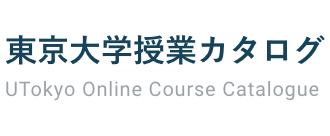過去(2018年度)の授業の情報です
学内のオンライン授業の情報漏洩防止のため,URLやアカウント、教室の記載は削除しております。
最終更新日:2025年4月21日
授業計画や教室は変更となる可能性があるため、必ずUTASで最新の情報を確認して下さい。
UTASにアクセスできない方は、担当教員または部局教務へお問い合わせ下さい。
最終更新日:2025年4月21日
授業計画や教室は変更となる可能性があるため、必ずUTASで最新の情報を確認して下さい。
UTASにアクセスできない方は、担当教員または部局教務へお問い合わせ下さい。
メディア表現論I
メディア表現論
Media Practice
ここでいう「メディア表現」とは、せまい意味でのアートやデザインの表現活動や作品を意味するのではありません。メディアに媒介された、一般的な人々のコミュニケーション活動を、私たちが生きる社会文化的な文脈のもとで「表現」ととらえて使っています。デジタル・メディア社会における人々の自己実現と、共同体の形成、維持、ネットワーク化のためには、メディア表現としてのコミュニケーション活動の充実を図ることが欠かせないと考え、このことについてみなさんと実践的に考えていきたいと思います。そのことは必然的に、デジタル時代のメディア・リテラシーについての実践や研究にも結びつくことになります。したがってこの授業はメディア表現とメディア・リテラシーの両方を射程に入れたものになります。
授業はS1 タームのみ(月曜と木曜のそれぞれ2時限目に開講)。
メディア表現、あるいはメディア・リテラシーの実践的なグループ活動を月曜におこない(実践編)、それらに関する思想や理論の講義や講読を木曜におこないます(思想編)。すなわち実践と思想を並行して進める予定です。いうまでもなく実践と思想は循環的な関係にあり、最終的にはそれらを総合したかたちでのグループ活動の成果発表をしてもらいます。
実践編の具体的な活動内容は、授業に参加する学生らの面構えと人数などを見て決めます。2017年度は「memories×History」というメディアをめぐる記憶と歴史についてのワークショップをおこないました。16年度はデジタル・ストーリーテリング「メディア・コンテ」をおこない、各自の作品を制作しました。15年度は微弱電波ラジオづくりをおこないました。
実践活動は基本的にグループワークで進め、なんらかの制作物の発表・公表をおこない、情報学環のイベントやウェブサイトを通じて一般に向けて公開することまで考えています。
思想編では、メディア・リテラシー、市民のメディア表現をめぐる運動や実験などを含む実践的な手法に基づくメディア研究(批判的メディア実践)、オルタナティブ・メディアなどをめぐって講義と文献講読をおこないます。
この授業の目標を箇条書きにすると次のようになります。
メディア論、メディア・リテラシー、コミュニケーション論の領域で、理論や思想(批判的人文知)と実践やデザイン(創造的デザイン知)を架橋することの意義や、そのための方法の基本を体得すること。
授業はS1 タームのみ(月曜と木曜のそれぞれ2時限目に開講)。
メディア表現、あるいはメディア・リテラシーの実践的なグループ活動を月曜におこない(実践編)、それらに関する思想や理論の講義や講読を木曜におこないます(思想編)。すなわち実践と思想を並行して進める予定です。いうまでもなく実践と思想は循環的な関係にあり、最終的にはそれらを総合したかたちでのグループ活動の成果発表をしてもらいます。
実践編の具体的な活動内容は、授業に参加する学生らの面構えと人数などを見て決めます。2017年度は「memories×History」というメディアをめぐる記憶と歴史についてのワークショップをおこないました。16年度はデジタル・ストーリーテリング「メディア・コンテ」をおこない、各自の作品を制作しました。15年度は微弱電波ラジオづくりをおこないました。
実践活動は基本的にグループワークで進め、なんらかの制作物の発表・公表をおこない、情報学環のイベントやウェブサイトを通じて一般に向けて公開することまで考えています。
思想編では、メディア・リテラシー、市民のメディア表現をめぐる運動や実験などを含む実践的な手法に基づくメディア研究(批判的メディア実践)、オルタナティブ・メディアなどをめぐって講義と文献講読をおこないます。
この授業の目標を箇条書きにすると次のようになります。
メディア論、メディア・リテラシー、コミュニケーション論の領域で、理論や思想(批判的人文知)と実践やデザイン(創造的デザイン知)を架橋することの意義や、そのための方法の基本を体得すること。
時間割/共通科目コード
コース名
教員
学期
時限
4915080
GII-CS6408L1
メディア表現論I
水越 伸
月曜2限、木曜2限
講義使用言語
日本語
単位
2
実務経験のある教員による授業科目
NO
他学部履修
可
開講所属
学際情報学府
授業計画
(初回で履修者の状況に対応して内容を変更していく予定)
01.はじめに:メディア表現論の射程
02.実践編01 ミニワークショップ
03.思想編01 文献講読
04.実践編02 ワークショップ(WS)
05.思想編02 文献講読
06.実践編03 WS
07.思想編03 文献講読
08.実践編04 WS
09.実践編05 WS
10.思想編04 文献講読
11.実践編06 Presentation of WS
12.思想編05 文献講読
13.まとめ
授業の方法
原則として、月曜日はワークショップをおこない、木曜日は講義、文献講読をおこなう。
The course will be divided into two streams. Collaborative workshop on Monday, and lecture and reading on Thursday.
成績評価方法
出席(30%)、授業中の成果(50%)、レポート(20%)
グループワークなどがあるため出席と授業中の成果が連動しており、それらを重んじます。
Attendance 30%, Achievement in the classroom 50%, Report 20%
Because of the collaborative workshop on Monday stream, attendance and achievement will be important.
教科書
教科書はないが、下記の参考書を読んでいく予定である。
参考書
・水越伸『改訂版 21世紀メディア論』放送大学教育振興会、2014年.
・菅豊『「新しい野の学問」の時代へ:知識生産と社会実践をつなぐために』岩波書店、2013年.
・David Slater & Maja Veselič. Voices from Tohoku: "Public" Research, New Media Practices and "Archive of Hope." 5: Designing Media Ecology. 1st issue. June 2014. 5 editorial office. pp.28-41.
・雑誌『5:Designing Media Ecology』(http://www.fivedme.org)
履修上の注意
メディア論の基礎的素養がすでにある方が望ましい。授業は日本語で進めるが、英語文献も読む。他研究科院生、学府博士課程院生の参加も大歓迎である。しかし外国人研究生の出席は認めない。スマートフォン、タブレットなど、自分のものを授業に持参すること。授業時間以外にいわば宿題をこなす必要がある。
Students need the basic knowledge of media studies. Japanese language will be used in the course, although some of literatures will be English ones. Students in other graduate schools and PhD students of GSII are welcome. Foreign research students are not permitted. Bring either your own mobile phone or tablet media for the collaborative workshops. There will be some homework.





 大学院
大学院

 マイリストに追加
マイリストに追加
 マイリストから削除
マイリストから削除


